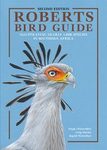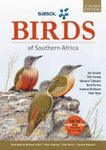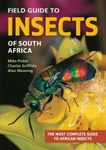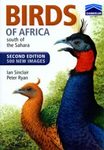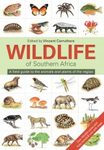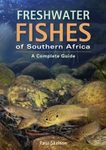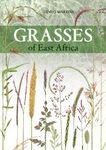Field / Identification Guide
By: Warwick Tarboton(Author), Peter G Ryan(Author)
224 pages, 600+ colour photos, colour distribution maps
![Guide to Birds of the Kruger National Park Guide to Birds of the Kruger National Park]()
Click to have a closer look
About this book
Customer reviews
Biography
Related titles
About this book
The Kruger National Park is one of the largest and best-known conservation areas in the world. Although famous as home to Africa's iconic Big Five, it is equally renowned for its staggering diversity of birds. Some 500 species have been recorded within its range, representing more than half the number of species found across southern Africa.
Informative species accounts, full-colour photographs and distribution maps that indicate actual sightings make this book an invaluable guide for easy identification. An introductory chapter discusses the park's geology, vegetation types, climate and rainfall, and how these determine bird distribution.
Customer Reviews (1)
-
Stand-alone field guide to Kruger's birds
By
Gehan de Silva Wijeyeratne
23 Jun 2019
Written for Paperback
Kruger National Park is bigger than some countries. If Kruger was a country, this would in fact be a stand-alone field guide. The point I am making here is that some books which focus on birds at a specific site make an implicit assumption that a serious birder would be backed up by a more comprehensive field guide and may economise on the use of illustrations or in the scope of the identification text;whereas this title is usable on a stand-alone basis. This is subject to the caveat no field guide can be entirely stand-alone when it comes to especially tricky identification situations, when more advanced texts may need to be consulted. However, for the majority of birders, if you were visiting only Kruger, this book would be adequate.
I suppose the key publishing rationale for this book is that there are people who may only be visiting Kruger and may not want the size and depth of a full field guide to the birds of South Africa or more broadly, the Southern African region. A smaller more focussed book is lighter and also one that seems easier on the eye with fewer species to choose from. The ease of use is further reinforced by the photographs on the facing page. They look clean and simple. This is not to suggest that their usefulness for identification is any less than in one of the bigger field guides. For many species where necessary, a range of plumages (male/female, immature/adult) is illustrated. The combination of text and images is strong as expected in a full-fledged field guide. The images are crisp and well composed and are generally to a very high standard. Although a number of photographers are mentioned in the acknowledgement, the picture credits against the pictures suggest that the two main authors are responsible for most of the photography.
The bulk of the book comprises the species account with the text following a standard field guide format covering identification, habitat and distribution, behaviour, vocalisation etc. The two authors are both big names in the Southern African birding literature and it is evident that the authors are intimately familiar with their subject matter. The species accounts are headed by family descriptions. These are often readable snippets of information. I like the fact that they have not been grouped at the beginning or end. The arrangement at the start of a family section makes them more likely to be read. They reflect modern taxonomy which has been based on molecular phylogenetics. For example, it points out that African Barbets are in a family of their own, separate from the barbets found in Asia and in Tropical America. The family descriptions also provide a good family portrait so that the book becomes something more educational. For example, one learns that the barbets use their holes excavated in wood for roosting at night and that the barbets are brood parasitized by Honeyguides.
A strength of the book is the inclusion of granular maps. These are not simply broad brush shaded area maps, but fairly granular maps covering pentads (five minutes longitude and five minutes latitude) which are 9km by 8km. Each pentad covers approximately 70 square kilometres. Kruger is covered by 283 such pentads; another indication of the vast size of the park which is over 19,000 square kilometres. The type of distribution map which is seen in more technical bird atlas type publications may seem a little at odds with the generally accessible format of this book. But the maps are easy to get used to and do not detract from the uncluttered style. The maps only use two sizes of dots (low and high frequency of occurrence within a pentad) and are shaded green for residents and red for visitors. The map information is therefore easy to process and it is very easy to gain a sense of whether you are in the right part of the park for a given species. The area covered by the maps extends outside the park to cover some of the private game conservancies. However, the park’s borders are shown on each map and there is no ambiguity on the distribution within the park.
The introductory section is useful and has maps showing vegetation, geology and rainfall. The geology and topography together with river systems and lakes determine the vegetation which in turn is a key determinant of the distribution of birds. The inclusion of these maps and the discussion of the park’s bird life in the introductory chapter are helpful.
The end sections have a list of vagrants and rarely recorded species and unsubstantiated records imparting an additional ornithological rigour to this book. The last page has a map of the Kruger with a list of 39 sites. This will be very useful for those planning a trip as well as for orientation when in the park.
The book draws attention to Kruger with 500 species recorded in it; half the species found in southern Africa. Of the 500 species, we learn in the introduction that nearly 400 are regulars counting both residents and regular visitors. Kruger is the kind of place that a birder on a visit to South Africa could elect to have as the only destination on a trip and still see a huge variety of birds, mammals and other wildlife. This will be a useful book for locals on a visit to Kruger as well as foreign visitors for whom Kruger is the only or main focus of a birding trip.
7 of 9 found this helpful
-
Was this helpful to you? Yes No
Biography
Warwick Tarboton is a well-known bird expert and writer of several books. He is a past president of BirdLife South Africa and has been awarded the Gill Memorial Medal and the Stevenson-Hamilton award for services to ornithology and zoology.
Peter Ryan is Director of the FitzPatrick Institute of African Ornithology at the University of Cape Town. He is a keen bird photographer, has travelled widely in pursuit of birds and has authored several books on birds and various subantarctic islands.
Field / Identification Guide
By: Warwick Tarboton(Author), Peter G Ryan(Author)
224 pages, 600+ colour photos, colour distribution maps




















